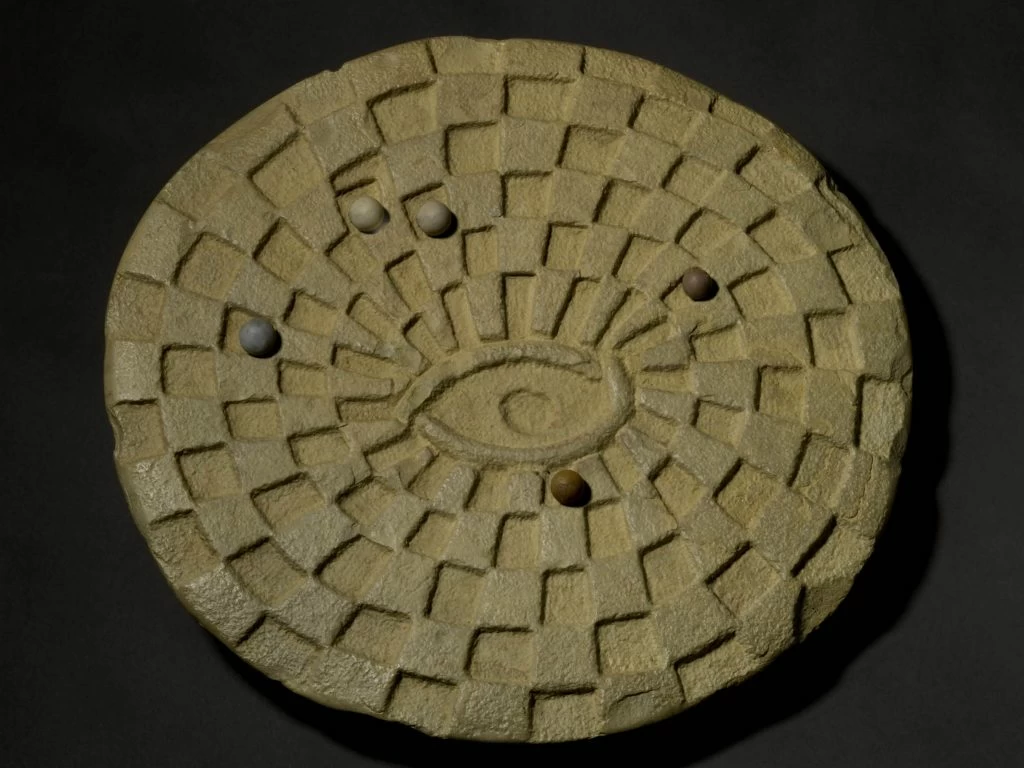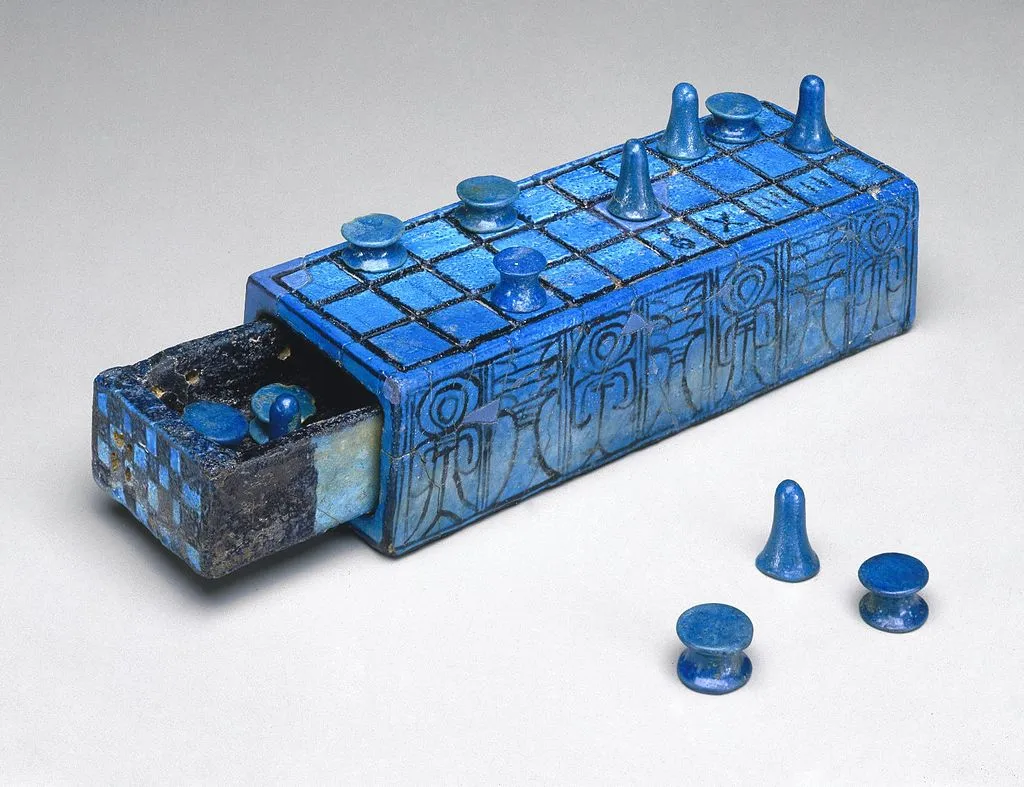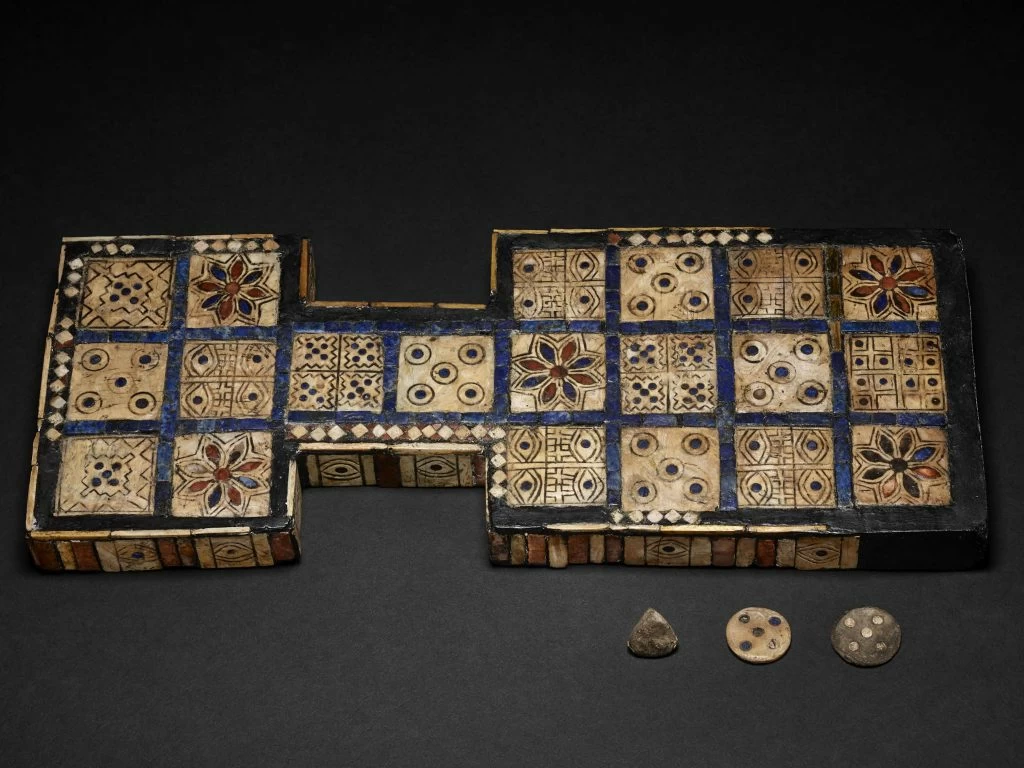Ancient Games
Let’s roll the dice and see where history takes us!

Mehen (pictured above) is an ancient Egyptian game, references to which have been found already in the predynastic period, before 3100 BCE. The game is a spiral in the shape of a coiled snake with the snake’s head in the center of the disk.
The genesis of games in ancient civilizations is a topic as fascinating as it is expansive. Games, in their various forms, have been a universal part of human experience, transcending cultures, geographies, and time periods.
Ancient games have long been a window into the past, revealing the cultural, intellectual, and social values of civilizations long gone.
These games, some dating back thousands of years before the common era, were not just pastimes but also tools for education, social interaction, and even spiritual practices.
The Role of Games in Early Societies
Long before the advent of modern technology, ancient civilizations were engrossed in a variety of games.
These activities, often deeply rooted in religious and cultural practices, served as a means of education and social interaction.
Games and Society
In ancient civilizations, games often mirrored the societal structures and beliefs. They were embedded with symbolic meanings and sometimes used for divinatory purposes. For instance, games in ancient Egypt were believed to be connected with the afterlife, offering a simulation of the journey of the soul. Similarly, in ancient Mesoamerican cultures, ball games held religious significance and were intertwined with myths and the cosmos. Interestingly, many modern casino games can trace their origins back to these ancient games, demonstrating the enduring appeal and evolution of gaming through the ages. For those interested in experiencing this rich gaming tradition today, the best online New Jersey casinos offer a contemporary portal to the thrill of competition and chance, echoing the past.
Early games used various materials like bones, shells, stones, and sticks, with some even serving divinatory functions. They were central to cultural and social bonding, used in teaching, and acted as markers of social status. For the elite, games like Senet and the Mesoamerican ball game held religious significance and were also diplomatic gifts.

Archaeological Significance
Archaeological discoveries have played a pivotal role in uncovering the origins of games. Artifacts like game boards, pieces, and depictions in art have provided invaluable insights into how these games were played and their significance in ancient societies. These archaeological findings are not just remnants of ancient leisure activities; they are windows into the past, revealing the daily lives, beliefs, and interactions of our ancestors.
Board games likely originated in the ancient Near East, with the earliest pieces found in Turkey dating back 5,000 years. The Royal Game of Ur, dating back to 2600-2400 BCE, was known across ancient civilizations and had astronomical significance.

Complexity and Spread in Ancient Civilizations
Ancient Greece and Rome had a variety of games including Episkyros, Harpastum, and Tic-tac-toe, reflecting the diversity and spread of games throughout these cultures. Post the Muslim conquest of Persia, Shatranj (chess) spread to the Arab world, evolving with the cultural context.
In India, games like Chaturanga, the precursor to chess, developed around the Kushan or Gupta periods, symbolizing military strategy. Other games like Carrom and Snakes and Ladders originated in the Indian subcontinent, each with unique cultural significance.
- Chinese Contributions – China contributed significantly with games like Liubo, Go, and Xiangqi (Chinese Chess), each reflecting different aspects of Chinese culture and society. The invention of playing cards in China during the Tang Dynasty further exemplifies the region’s influence on global game history.
- African Gaming Traditions – Mancala, one of the most widespread native African games, possibly the oldest in the world, showcases the diversity of African cultural heritage.
- Games in the Americas – In the Americas, games like Patolli and the Mesoamerican ballgame were popular, reflecting the indigenous cultures of the region.
- European Developments – In Northern Europe, the Tafl games, played across Germanic and Celtic societies, are an example of the region’s unique gaming traditions. Chess, which reached the Iberian Peninsula in 822, spread throughout Europe, adapting to local cultures.
- Medieval Contributions – The Libro de los juegos, commissioned by Alfonso X of Castile in 1283, is a significant medieval source, containing descriptions and illustrations of various games.
The history of games is a testament to human creativity and cultural exchange. From the ancient Near East to Europe, Asia, Africa, and the Americas, games have evolved, mirroring the societal, religious, and intellectual contexts of their times. They have served as teaching tools, as reflections of social status, and as integral parts of cultural ceremonies and rituals. Through games, we can trace the development of strategic thinking, social interaction, and cultural values across civilizations, providing a rich tapestry of our shared human heritage.